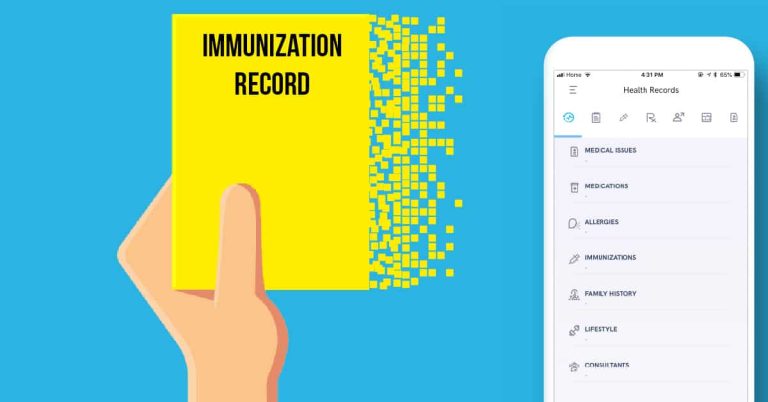The Risks of Telemedicine-Only Care: Why Hybrid Healthcare Works Better
Telemedicine Alone: Unveiling Its Limitations and Embracing a Hybrid Healthcare Model
In an era defined by digital innovation, telemedicine has rapidly emerged as a popular option for many seeking convenient healthcare. The idea of connecting with healthcare professionals via video or phone calls is undeniably appealing. However, relying on telemedicine as a standalone service may not always offer the comprehensive care patients need and can even introduce risks if used in isolation. In this article, we delve into the dangers of using telemedicine alone, explore the nuances that make it potentially dangerous, and examine why a hybrid model—integrating both telemedicine and in-person visits—can provide a safer, more effective alternative. For those living in Toronto and beyond, understanding this balance is essential for making informed healthcare decisions.
Understanding Telemedicine: The Promise and the Pitfalls
Telemedicine has revolutionized the delivery of healthcare by bridging geographical gaps and enabling access to care from virtually anywhere. It is particularly beneficial for routine check-ups, follow-ups, and managing chronic conditions when patients have limited mobility or live in remote areas. Yet, even as telemedicine offers undeniable advantages, its limitations as a standalone solution become clear upon closer examination.
The Allure of Digital Care
- Convenience and Access: With just a few taps on a smartphone or computer, patients can consult healthcare professionals without leaving the comfort of their homes. This is especially beneficial for busy individuals or those with mobility challenges.
- Efficiency and Speed: Telemedicine often reduces waiting times and can quickly address non-urgent health issues. Appointments that start on time allow patients to plan their day with minimal disruption.
- Cost-Effective: For minor concerns or routine matters, telemedicine can be more affordable than traditional in-person visits, particularly when considering travel expenses and time savings.
Inherent Limitations
While these benefits are striking, telemedicine also comes with inherent limitations when used as the sole approach to healthcare:
- Limited Diagnostic Accuracy: Physical examinations and certain diagnostic tests require in-person assessments. Relying solely on digital consultations can mean missing key physical signs or subtle symptoms that only a hands-on examination can reveal.
- Risk of Miscommunication: Non-verbal cues play a significant role in patient-provider communication. Telemedicine might lack the depth of in-person interactions where body language and facial expressions provide crucial context.
- Technology Challenges: Not all patients have access to or are comfortable with the necessary technology. Poor internet connectivity or unfamiliarity with digital tools can hinder the quality of care.
- Delayed Emergency Response: Telemedicine is not designed to handle emergencies. While it works well for scheduled consultations, a patient experiencing a rapidly evolving condition might suffer delays in receiving the necessary urgent care.
The Hidden Dangers of Standalone Telemedicine
Missing the Nuances of a Physical Examination
A major concern with a telemedicine-only approach is the risk of missing nuanced elements of a physical examination. During in-person visits, healthcare providers can observe real-time physical cues—such as the quality of a patient’s breathing, skin tone, or even hesitation in movement—that might go unnoticed during a digital consultation. In cases where subtleties make the difference in a diagnosis, the absence of a hands-on examination can lead to misdiagnosis or delayed treatment.
Communication Gaps and Misinterpretations
Even the most articulate patients can struggle to express their symptoms accurately over a video call. Without the benefit of in-person presence, both patients and practitioners rely heavily on verbal descriptions, which might lead to misinterpretations. Research from Canadian health institutes indicates that non-verbal communication improves diagnostic accuracy, particularly in complex cases. When telemedicine is used without the balance of face-to-face interaction, there’s an increased risk of errors that can compromise patient safety.
The Limitations in Managing Chronic and Complex Conditions
For patients with chronic diseases, the management of their condition often requires detailed testing, ongoing monitoring, and swift adjustments in care—factors that can be challenging to manage solely through telemedicine. Conditions such as diabetes, hypertension, and heart disease benefit from regular physical assessments, laboratory tests, and comprehensive evaluations that are best conducted in person. Although telemedicine offers a platform for regular check-ins, it cannot fully replace the insight gained from periodic physical examinations and diagnostics.
Managing Mental Health and Lifestyle Counseling
While telemedicine has opened doors to mental health services by making consultations more accessible, the therapeutic process sometimes benefits from in-person cues that help build trust and rapport between the patient and provider. Mental health assessments often include subtle cues conveyed by posture, eye contact, and physical demeanor. The absence of these cues in virtual sessions can sometimes lead to an incomplete picture of the patient’s emotional state. Thus, relying solely on digital platforms for mental health care could inadvertently overlook essential details.
The Technology Trap: Security and Privacy Concerns
Another less-discussed danger of telemedicine involves the security of personal health information. Digital platforms, while generally secure, are not immune to data breaches or unauthorized access. Patients must rely on the robustness of the telemedicine technology, and any vulnerabilities can expose sensitive medical information. This aspect underlines the importance of using secure, reliable platforms and reinforces the need for a balanced approach where in-person visits help mitigate this risk.
The Hybrid Model: Integrating Telemedicine with In-Person Visits
Given the limitations and potential dangers of using telemedicine as a standalone service, many healthcare providers and patients alike are turning to a hybrid model—a blend of virtual consultations and traditional in-person visits. This integrated approach maximizes the strengths of both modalities while minimizing their respective shortcomings.
Benefits of a Hybrid Approach
- Comprehensive Care: By combining telemedicine with in-person appointments, healthcare providers can evaluate patients comprehensively. Routine follow-ups can be conducted virtually, while more complex assessments and procedures are reserved for face-to-face appointments.
- Timely and Accurate Diagnoses: In-person visits allow for hands-on examinations and diagnostic tests that complement the insights gained from telemedicine. This ensures timely and accurate diagnoses, particularly for conditions requiring physical evaluation.
- Enhanced Patient Engagement: A hybrid model creates a more dynamic patient-provider relationship. Patients benefit from the convenience of telemedicine without sacrificing the quality and depth of in-person care.
- Balanced Resource Utilization: For healthcare systems, a hybrid approach optimizes resource allocation. Routine care that can be delivered digitally reduces the burden on busy clinics, while critical cases continue to receive the in-depth attention provided through in-person evaluations.
How Hybrid Care Works in Practice
Consider the approach of Care& Family Health—a modern family clinic in Toronto that leverages a hybrid model to offer the best of both worlds. Patients can access unlimited phone and video consultations with their Nurse Practitioner for everyday concerns while scheduling in-person visits for physical examinations, lab work, and more complex assessments. This model not only ensures that no aspect of patient care is compromised but also enhances overall patient safety and service quality.
- Digital Convenience with In-Person Assurance: Routine consultations, prescription refills, and follow-up communications are efficiently handled via telemedicine. When the situation demands, patients can seamlessly transition to in-person visits where needed.
- On-Site Lab Services: Many patients require diagnostics that simply cannot be performed remotely. With on-site lab facilities, Care& ensures comprehensive testing is available, thereby reinforcing the safety net provided by their hybrid model.
- Flexibility and Accessibility: Whether you’re in the heart of Toronto or its surrounding areas, the integration of telemedicine with physical appointments ensures that you receive effective, efficient, and accessible care tailored to your needs.
Balancing Safety and Efficiency: Best Practices for Patients
For those navigating their own healthcare decisions, understanding how to make the most of a hybrid model can lead to safer and more effective outcomes. Here are some best practices for patients:
- Assess Your Needs: Understand which elements of your care can be managed digitally versus those that require an in-person assessment. Routine check-ups and follow-ups may be ideal for telemedicine, while initial evaluations and emergencies should prompt a visit to a clinic.
- Maintain Open Communication: Discuss your comfort levels with both your telemedicine platform and in-person practice. Clear conversations about symptoms, concerns, and treatment plans lead to more effective care.
- Utilize Technology Wisely: Ensure that you have a secure device and a reliable internet connection for telemedicine visits. Familiarize yourself with the digital tools and platforms provided by your healthcare provider.
- Schedule Regular In-Person Visits: Even if you primarily use telemedicine, schedule periodic in-person appointments to conduct comprehensive physical examinations and necessary diagnostic tests.
- Keep a Detailed Health Record: Digital records, especially when combined with in-person updates, help build a complete health profile, aiding healthcare providers in making informed decisions.
- Ask About Integrated Services: Inquire if your healthcare provider offers a hybrid model that aligns with both telemedicine and traditional care. Many modern clinics, such as Care& Family Health, provide a balanced approach ensuring no aspect of your health is overlooked.
By taking these steps, patients can leverage the convenience of telemedicine while also safeguarding against the risks associated with a sole reliance on digital consultations.
Expert Insights: When Telemedicine Meets Traditional Care
Healthcare professionals increasingly advocate for a balanced, hybrid approach to medical care. Experts emphasize that telemedicine, when combined with in-person visits, captures the comprehensive understanding of patient health that is often lost in a virtual-only setting.
According to recent studies from Canadian health authorities, digital consultations have significantly improved access for many patients but are most beneficial when integrated into a broader, face-to-face clinical framework. In-person evaluations contribute critical observations and hands-on diagnostic capabilities that digital methods simply cannot replace.
Providers who embrace both methods report higher levels of patient satisfaction and improved health outcomes. They note that patients feel more comfortable discussing sensitive issues both over video and in a private, physical setting. This continuity of care fosters a deeper level of trust, further enhancing treatment adherence and long-term health management.
In real-world practice, this hybrid approach has been especially valuable for managing complex cases, ensuring that subtle symptoms are captured during physical exams, while telemedicine plays a role in continuous monitoring and follow-ups. For instance, managing chronic conditions such as diabetes often requires a careful blend of regular in-person check-ins (for blood work and physical examinations) and remote communications (for daily monitoring and advice). Such practices have led to improved patient outcomes and a markedly safer healthcare experience.
The Toronto Advantage: Localized Hybrid Healthcare
For residents of Toronto, having access to both telemedicine and traditional in-person care within a single healthcare network offers an unmatched level of convenience and security. Urban centers like Toronto benefit from a robust infrastructure where patients can easily schedule a mix of virtual and physical appointments.
Care& Family Health’s approach in Toronto exemplifies this blend. With clinic locations in dynamic areas of the city along with an advanced digital platform, patients enjoy a seamless transition between remote consultations and in-person services. This local accessibility means that whether you’re at home, work, or on the go, quality healthcare is always within reach.
Toronto’s commitment to healthcare innovation is also evident in the rapid adoption of hybrid practices. The city’s diverse population and busy lifestyle necessitate a flexible model that adapts to individual needs—combining the technological convenience of telemedicine with the thoroughness of physical assessments. This integrated approach does not merely serve individual patients but also contributes to a more resilient, patient-centered healthcare system across the region.
Conclusion: Embracing a Safer, Smarter Healthcare Future
In summary, while telemedicine offers a host of benefits—from unparalleled convenience to improved access—it is not a one-size-fits-all solution. Used in isolation, telemedicine can miss critical aspects of patient care, leading to potential misdiagnoses and gaps in treatment. Relying solely on digital consultations may even pose risks, especially for complex, chronic, or emergency conditions where physical examinations and diagnostic tests are paramount.
The hybrid model, where telemedicine is seamlessly integrated with in-person visits, provides the best of both worlds. This approach ensures that patients receive a comprehensive evaluation when needed, all while enjoying the flexibility and speed of digital care for routine matters. For anyone seeking a balanced, efficient, and safe healthcare experience, this integrated model is the future.
If you’re looking for a healthcare provider that understands the importance of both digital innovation and traditional personal care, consider exploring the services at Care& Family Health. Their unique model combines the ease of telemedicine with the reliability of in-person appointments, ensuring that your healthcare is as dynamic and adaptable as your lifestyle.
Taking small steps today—by choosing a model that prioritizes comprehensive care—can lead to exceptional health outcomes tomorrow. Connect with a trusted healthcare professional to start your journey toward better health and more secure care.
By understanding the limitations of standalone telemedicine and embracing a hybrid approach, you are choosing safety, accuracy, and personalized care. Reach out to Care& Family Health for tailored support that adapts to your unique needs in Toronto, ensuring that modern convenience never compromises quality or efficacy in your health journey.
Less Wait Time, More Face Time
Visit www.careand.ca to register
Contact Information:
📞 Phone: +1-647-951-4770
📧 Email: helpdesk@careand.ca
🌐 Website: www.careand.ca
Disclaimer:
This article is for informational purposes only and does not constitute medical advice. Always consult with a qualified healthcare provider for personal medical guidance. The information provided is general in nature and may not apply to individual circumstances.







